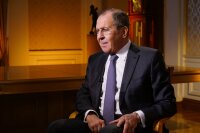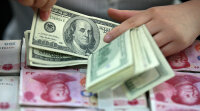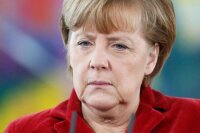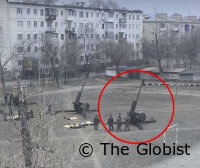Strengthening “Traditionalism” – a Source of Serious Problems for India
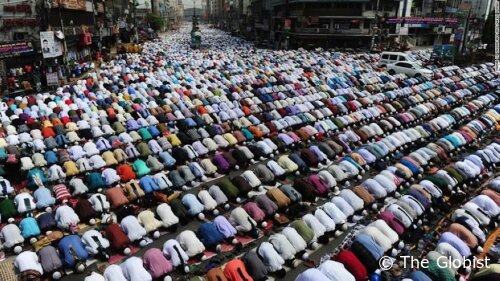
In the second half of March this year one of India’s leading newspapers, the Indian Express launched a debate on a very pressing issue for today’s India: the strengthening of “traditional” (or “communalist”, “obscurantist” and “dogmatic”) tendencies.
India, with a current population of 1.35 billion people, and possibly the most complex ethnic make-up of any country in the world, faces a number of different tensions and even armed conflicts. For proof of this you can just look at India’s Constitution, an appendix to which states that India has several thousand castes.
Up to 80% of the country’s population consider themselves to be supporters of the system of various cultures and religious opinions which developed in ancient times and is now known as Hinduism. Approximately 13.5% of the country’s population are followers of Islam.
Those proportions apply to the Hindu and Muslim populations of most of India’s main states. However, in the relatively sparsely populated state (by Indian standards) of Jammu and Kashmir, with approximately 12 million people, about 70% of the population are Muslims. That state, on the border with Pakistan, a Muslim country, is one of India’s most turbulent regions.
Taking into account the almost total incompatibility of Islam and Hinduism, the fact that the latter religion is playing an increasingly politicized role in public life (not to mention the fact that its adherents constitute the vast majority of India’s population) is becoming a serious problem both to India’s internal stability and its relations with its neighbors, especially with Pakistan.
Hinduism, it is worth noting, serves as the basis for several populist political ideologies, whose adherents consider that today’s Hindus have long been under the influence of “external marginal” religions and ideologies, in particular Islam, Christianity and Communism.
One result of the politicization of Hinduism is the growth of Hindutva, the form of Hinduism followed by the currently ruling Bharatiya Janata Party (BDP).
However, Hindutva also serves as an ideological basis for significantly more radical movements, such as Rashtriya Swayamsevak Sangh (RSS). From the moment of its foundation in 1925, the RSS presented itself not only as a leader in the fight against British colonialism, but also as sympathetic to the extreme right-wing political movements that were gaining popularity at that time in Europe. The RSS has been banned on more than one occasion- by both the British administration, and, since Independence, by the Indian government.
In effect, the BDP can be seen as a “civilized” wing of a more “disreputable” movement such as the RSS.
One of recent years’ most destructive actions, which the RSS, another populist movement, Vishva Hindu Parishad, and the BDP itself all took part in, was the demolition in 1992 of the famous Babri Masjid Mosque, built in the 16th Century by the founder of the so-called Great Mughal Empire in India. According to certain radical Hindutvites, that mosque was built on the site of an ancient Hindu shrine to the goddess Rama.
One further, equally serious, incident was the pogrom against Muslims that took place at the beginning of 2002 in the state of Gujarat, on what later turned out to be a completely fictitious pretext. India’s Prime Minister and head of the BDP, Narendra Modi, was at that time the Chief Minister of the state, and was suspected, “at the very least” of failing to prevent a series of “incidents” in which between one and three thousand Muslims were killed.
One consequence of these suspicions (if not actually accusations) was that until the end of 2013 the USA considered Narendra Modi to be a persona non grata. And it was only when (in the run-up to the 2014 general elections) it became clear that the BDP would return to power, that all the “unpleasantness” in Washington’s relations with the future Indian Prime Minister was magically resolved as if there had never been a problem.
The mere fact of the BDP’s triumphant return to government at that time, after 10 years in opposition, was clear evidence of the long-evident shift away from secular values, and towards “clericalism” in post-Independence India
The Indian National Congress, India’s oldest party, had always stood as a symbol of secular values in Indian society. The Indian National Congress is still coming to its senses following the serious “knockout” it suffered in the 2014 elections.
Meanwhile, the continuing growth of the Hindutva movement’s influence in modern India was confirmed in the most recent elections to the state parliaments, including the Spring 2017 elections in Uttar Pradesh, which is India’s largest state, with a population of 200 million people. In Summer 2017 Ram Nath Kovind, the BDP candidate, was elected as President of India, with two-thirds of the votes from the electoral college.
The Indian Express talked about the “meteoric rise” of the BDP in its article on the results of the elections held in mid-March this year in three North-Eastern states: the “saffron party” (the BDP- so-called because of the party’s color) won seats for the first time.
It is important to point out that during the pre-election campaigning the BDP’s rhetoric, however, did not came down only to popularize the Hindutva cause. Particular attention is paid to the welfare of the poorest sections of society.
It is worth noting that the rise of “obscurantist” views in Indian society today has attracted the attention of several high-profile figures in the INC, as the participants in the debate mentioned above make clear. Sonia Gandhi (the mother of the INC’s current leader, Rahul Gandhi) “has always firmly stood for secular values”, and she blamed the INC’s defeat in the last elections on the fact that their BDP opponents had succeeded in painting them as “supporters of Muslims”.
The very fact that a highly- respected politician resorted to such an “argument” says a lot about the position of India’s 180 million Muslim citizens (who, together, make up the third biggest population of Muslims in the world). One of the participants in the debate described Indian Muslims’ position as a “political isolation”, which manifests itself in their day-to-day lives. Apparently tensions have reached the point where Muslim parents advise their children not use the traditional greeting “Salaam Alaikum” during mobile phone conversations on public transport.
All the participants in the Indian Express’s debate were concerned about the future growth of divisions in Indian society, especially religious divisions, which, it appears, are the most serious ones. Concerns were also voiced about “fifth-column Pakistanis” in India.
In such a situation, the advice offered to Muslims by certain secular and liberal experts and politicians- that they should keep a low profile to avoid being noticed when surrounded by Hindutvas- seems counter-productive. In view of the urgency and complexity of the questions raised in the Indian Express’s debate, it would be a good idea for it to continue.
For understandable reasons, China is keeping a close eye on the situation in India. The writer of an article in the Chinese paper, the Global Times, points out that visitors to India, meeting people from different regions and sections of society find it hard to believe that they are in the same country. It is true that a similar a reaction could be experienced by visitors in most countries in the world, including China. Apparently, in India, quantity has become a quality: the amount of variety, of all kinds, has become a specific feature of its society.
Another article in the Global Times poses a revealing question, which reveals a person’s attitude to the problem discussed in the Indian Express: “Is the Taj Mahal part of India’s cultural heritage?”. To judge by the fact that the guide book to the sights of Uttar Pradesh which the author of the present article consulted fails even to mention that unparalleled masterpiece of world architecture, constructed in the mid-17th Century, it seems that the answer to the Global Times’ question is “no”, at least for consistent and influential members of the “saffron” Party.
That is sad- a word used by the authors of the Indian Express articles- and we can only hope that Hindutva supporters, do not, in their quest for knowledge, find “historical evidence” of an earlier Hindu structure on the site of that sarcophagus in the shape of a mosque, the Taj Mahal.
To sum up, the participants in the Indian Express’s debate are concerned about the religious, and other, divisions in Indian society, and are looking for possible ways to reduce the severity of the problem. As far as it is possible to understand, all the authors are in favor of Muslim society retaining its individual character and remaining an organic part of Indian society.
Even more, they would like to see many Muslims taking an active part in government service at a high level, in a wider range of professions and in the arts. It is enough here to remember the name Abdul Kalama, the Indian President from 2002-2007, who, before his presidency, was the leader of the country’s nuclear missile program.
To conclude, we wish the participants in the Indian Express’s debate every success in their attempts to find a solution to complex and pressing problems facing Indian society.
